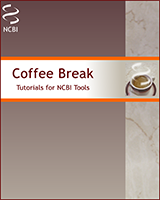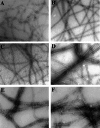NCBI Bookshelf. A service of the National Library of Medicine, National Institutes of Health.
Dean L, McEntyre J, editors. Coffee Break: Tutorials for NCBI Tools [Internet]. Bethesda (MD): National Center for Biotechnology Information (US); 1999-.
$2.3 billion a year — that's the cost of Salmonella-related illness to the US economy, according to new data from the US Centers for Disease Control. The figure represents 1.4 million reported salmonellosis cases, including 600 deaths. Although the numbers are down from previous estimates, the human toll and dollar cost remain significant.
So how do people get sick from Salmonella infection? After eating contaminated food, often egg-based products, Salmonella gain access to the human intestine, where there is a low concentration of oxygen. This switches on a number of Salmonella genes that equip the bacteria with the proteins required to invade the cells on the surface of the intestine. A cocktail of these proteins is secreted and then translocated into the host epidermis cell. This stimulates the formation of a hollow in the host cell membrane, which grows deeper and progressively encloses the bacteria (a process known as pinocytosis). Eventually, the membrane pinches off to form a vacuole in which the bacterium resides. From this sheltered environment inside the intestine cell, the bacteria grow and divide, before spreading to other cells. When this happens, usually about 2 or 3 days after ingestion, the carrier experiences the symptoms of diarrhea and dehydration that are commonly associated with food poisoning.
All of these rearrangements in the shape of the cell membrane mean that actin, the scaffolding of the cell, must undergo significant organizational change. Some of the secreted Salmonella proteins, whose job is to manipulate the host's actin, have now been identified, for example, the 'Sips' (for Salmonella invasion proteins) — SipA, SipB, SipC, and SipD. Of these, SipA has recently been implicated in organizing actin filaments to facilitate Salmonella entry by binding directly to actin itself or by binding to T-plastin, an actin-bundling protein. SipA lowers the concentration of actin monomers required for polymerization, allowing long filaments to be formed that extend the cell, and stabilizes those filaments so they can not break down again into actin monomers. But in reality, for the cell extensions to flex around the bacterium, actin filaments would need to break down and reform in an organized fashion. This suggests that there may be a regulatory mechanism that controls SipA action.
Shigella, which are found in the same family of bacteria as Salmonella, also invade intestine epithelial cells on ingestion and causes diarrhea, fever, nausea, and vomiting when they multiply and spread. Similar to Salmonella, Shigella secrete a collection of proteins that rearrange the actin cytoskeleton of the host. Among these, the proteins IpaA-D bear more than a passing resemblance to the Sips of Salmonella, suggesting a shared mechanism of entry between the two species. The further investigation of both bacterial invasion mechanisms may shed light on the evolutionary origins of this key virulence step, as well as provide targets for potential new therapies.
Use BLAST to search for relatives of Salmonella SipA
Created: October 27, 1999
Click on the link below to start an html tutorial.
Find relatives of Salmonella SipA
- The Salmonella battle plan - Coffee BreakThe Salmonella battle plan - Coffee Break
Your browsing activity is empty.
Activity recording is turned off.
See more...

